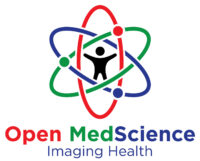Imaging in Neuropsychiatric Disorders
Neuropsychiatric disorders, including conditions such as schizophrenia, depression, bipolar disorder, and anxiety disorders, pose significant challenges in diagnosis and treatment. Advanced imaging techniques have revolutionised our understanding of these disorders by providing insights into the structure, function, and connectivity of the brain. This essay explores the pivotal role of imaging in neuropsychiatric disorders, highlighting its applications, advancements, and limitations.
Structural imaging techniques, such as magnetic resonance imaging (MRI) and computed tomography (CT), are fundamental tools in neuropsychiatric research and clinical practice. MRI, in particular, has been instrumental in identifying structural abnormalities associated with disorders like schizophrenia and bipolar disorder. For example, reductions in grey matter volume in specific brain regions, such as the prefrontal cortex and hippocampus, are often observed in schizophrenia. Similarly, volumetric changes in the amygdala have been linked to mood and anxiety disorders. These findings underscore the value of structural imaging in uncovering the anatomical basis of neuropsychiatric conditions.
Functional imaging, including functional MRI (fMRI) and positron emission tomography (PET), provides dynamic insights into brain activity and connectivity. fMRI measures changes in blood oxygenation, reflecting neuronal activity, and has been widely used to study neural networks involved in cognition and emotion. For instance, altered connectivity within the default mode network (DMN) has been implicated in depression and schizophrenia. PET, on the other hand, uses radiolabelled tracers to investigate neurotransmitter systems, such as dopamine and serotonin, which are often dysregulated in neuropsychiatric disorders. These functional imaging techniques have not only improved our understanding of the pathophysiology of these disorders but also facilitated the development of targeted treatments.
Emerging techniques, such as diffusion tensor imaging (DTI) and multimodal imaging approaches, are further advancing the field. DTI allows for the visualisation of white matter tracts and connectivity, providing crucial information on neural circuitry disruptions in conditions like autism spectrum disorder and obsessive-compulsive disorder. Multimodal imaging, which combines structural, functional, and molecular imaging, offers a comprehensive perspective on brain pathology, bridging gaps in our understanding of neuropsychiatric disorders.
Despite its advances, imaging in neuropsychiatric disorders has limitations. Variability in imaging protocols, small sample sizes in studies, and the complexity of brain-behaviour relationships often hinder reproducibility. Furthermore, while imaging provides valuable biomarkers for research, its clinical utility in diagnosing and monitoring neuropsychiatric disorders remains limited.
In conclusion, imaging has significantly enhanced our understanding of neuropsychiatric disorders, elucidating structural and functional abnormalities and guiding therapeutic developments. Continued advancements in imaging technologies and methodologies are essential to translating these insights into personalised and effective treatments for individuals living with these challenging conditions.
You are here:
home » Imaging in Neuropsychiatric Disorders


